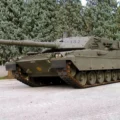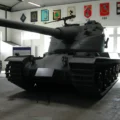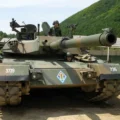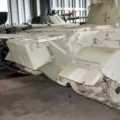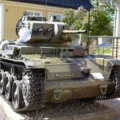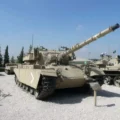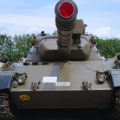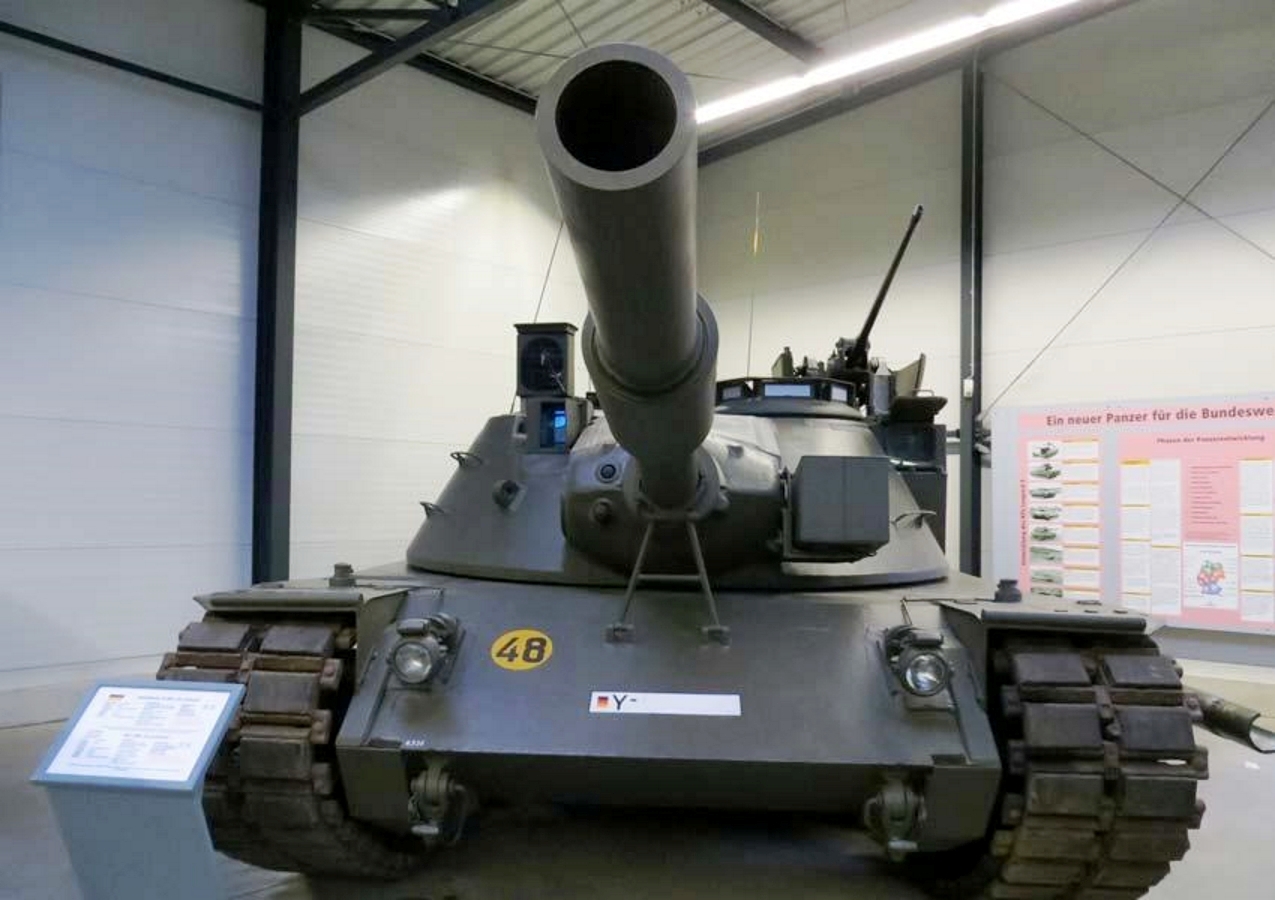
MBT-70 Experimentell | |
|---|---|
| Land | Deutschland/USA |
| Typ | Hauptkampfpanzer |
| Gewicht | 50t |
| Crew | 3 |
| Gebaut | 14 |
Fotogalerie eines MBT-70 Experimentell, The MBT-70 (German: KPz 70) was a 1960s German-U.S. joint project to develop a new main battle tank, which was to be equipped with a number of advanced features. It utilized a newly developed hydropneumatic “kneeling” suspension and housed the entire crew in the large turret. The MBT-70 was armed with a 152mm XM150 gun/launcher, which could use conventional ammunition and the Shillelagh missile for long range combat. By 1969 the project was well over budget and Germany withdrew from the effort, developing a new main battle tank on their own instead (the Leopard 2). In the US the development continued for a short time, until in 1971 when Congress cancelled the program. The MBT-70 is the failed predecessor of the Leopard 2 and the M1 Abrams, the current main battle tanks of both countries.
Quelle: Wikipedia
| MBT-70 Experimental | |
|---|---|
| Fotograf | David Lueck |
| Lokalisierung | Deutsches Armeemuseum Münster |
| Fotos | 136 |
| MBT-70 Main Battle Tank Walk Around | |
|---|---|
| Fotograf | Bill Maloney |
| Lokalisierung | Militärmuseum südneuengland |
| Fotos | 20 |
| Kampfpanzer 70 Walk Around | |
|---|---|
| Fotograf | Unbekannter |
| Lokalisierung | Unbekannter |
| Fotos | 46 |
Siehe auch:
| MBT 70 Walk Around | |
|---|---|
| Fotograf | Matt Flegal |
| Lokalisierung | Unbekannter |
| Fotos | 99 |
das MBT-70 Experimentell was a prototype of a new main battle tank that was developed jointly by the United States and West Germany in the 1960s. The project aimed to create a tank that could counter the Soviet threat in Europe, using advanced technologies such as a hydropneumatic suspension that allowed the tank to adjust its height and angle, a 152 mm gun/launcher that could fire both conventional shells and guided missiles, and a spacious turret that housed the three-man crew and all the controls and equipment.
Der KPz 70 Experimental wurde entwickelt, um schnell, wendig, gut bewaffnet und gut geschützt zu sein, aber er sah sich während seiner Entwicklung auch vielen Herausforderungen und Schwierigkeiten gegenüber. Das Projekt litt unter schlechter Kommunikation und Koordination zwischen den beiden Ländern, widersprüchlichen Anforderungen und Spezifikationen, technischen Problemen und Verzögerungen sowie eskalierenden Kosten. Der MBT-70 Experimental erreichte nie die Massenproduktion und wurde schließlich 1971 eingestellt, nachdem sich Westdeutschland 1969 aus dem Projekt zurückgezogen hatte. Die Erfahrungen und Technologien des MBT-70 Experimental wurden später für die Entwicklung des M1 Abrams für die Vereinigten Staaten und des Leopard 2 für Westdeutschland genutzt, die zu zwei der erfolgreichsten Kampfpanzer der Geschichte wurden.
Aufrufe : 4481


